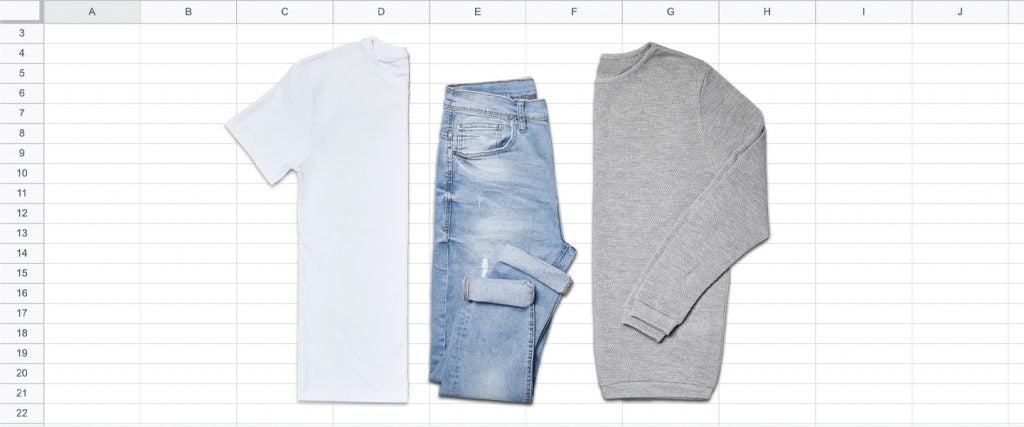It should come as no surprise that in our data-obsessed world there are men who optimize their style methodology — and the more banal, ever-present quandary, “What am I going to wear today?” — by tracking their wardrobe via spreadsheets and apps. One such sartorial statistician uses a highly detailed Google Spreadsheet to obsessively chronicle everything from the name of the item he wears to its color to even its primary material so he can assess what garments he’s missing and what he could use more of. Another does so in order to prepare his fits months in advance, and therefore, never have to worry about being indecisive in the morning when he’s rushing to get out the door.
Most of these findings have been presented on r/MaleFashionAdvice (MFA), the subreddit where more than three million guys help each other settle their most-pressing style conundrums (and where I first became aware of this data). But despite the passion and opinions there, the discussion remains otherwise highly qualitative. And so, these spreadsheets provide a new quantative wrinkle (and rigor) to the proceedings. The guys behind them also say that all the numbers provided them with a trio of lessons as well, which they shared with me below.
Lesson #1: They Consumed Fewer Clothes
There’s a nauseating amount of talk about how we should consume less clothes and brands ought to be more sustainable. And yet, we continue to buy clothes at a high clip. With that in mind, one MFA subscriber tells me that his spreadsheet helps him keep an eye on over-consumption and identifying a distinct purpose for any new piece. “For example, I have three sweaters (one thin/lightweight, one turtleneck and one crew neck),” he explains. “So if I see another one I want, I quickly glance to see if it fills a different role.”
For Harold, 39, the idea to turn his closet into a spreadsheet came last December when he had approximately 90 items in his wardrobe (not counting underwear and socks). “It was too much. I took a hard look at everything and downsized,” he says. “I’m at 72 right now, which feels good to me.”
Most recently, Harold’s spreadsheet saved him from purchasing a new parka that he’d had his eye on. “I checked my spreadsheet, and since I had a parka and a big wool coat already, I opted to sit on it for the time being and see how I feel this coming winter,” he explains. Overall, he adds, the spreadsheet has helped him go from incessant consumer to “more in a state of waiting for something I really like and possibly replacing some things.”
Lesson #2: They Better Understood What They Were Spending on Clothes
Cost per wear is something that comes up often in the MFA. One subscriber suggests going by the “One Dollar Per Wear Rule,” which, again, is meant to make you think before you buy. “It is simply: Take the price of an item, like a Target T-shirt, and make that the debt of the item,” he writes. Thus, if the T-shirt is $12, it takes 12 days of wearing it to pay itself off.
This is why Heath, 28, likes an app called Stylebook Men. It assesses his cost per wear and allows him to see the true cost of every item he owns. “It always makes me happy when an expensive piece I was unsure about purchasing comes down to a cheaper cost per wear than a cheap piece I’ve only worn a handful of times,” he tells me. “I’ve learned the total value of my closet — more than I’d like to admit!”
Lesson #3: They Found Their Preferred Style More Quickly
A few years ago, Zach, 29, another regular MFAer decided he wanted to wear “cooler clothes.” “I wanted to see how things had changed in a relatively short period of time for me,” he writes in his Reddit post. “In fitness, colloquially, there’s the ‘bulk phase’ and the ‘cut phase’ — and I had just started the cut phase.”
To that end, he wanted to focus his aesthetic around two brands in particular — Rick Owens and Undercover. “Putting this in a tangible, trackable format (rather than in my head) makes me only want to further reduce the number of brands and pieces represented,” Zach continues. “With my target aesthetic honestly achieved, my goals for this year are to keep the total number of pieces static, if not reduce even further.”
He and the rest of his brethren might not be doing it by the book. But they’re certainly doing it by the numbers.

